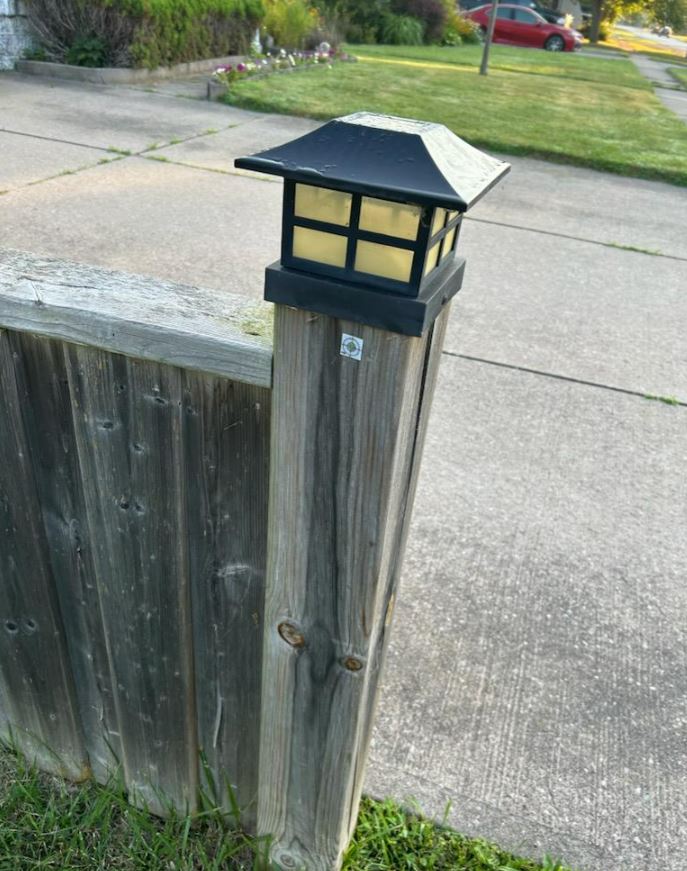Have you ever walked outside, glanced at your fence, and noticed a small square sticker or reflector nailed to it? At first glance, you might think it’s a random label, a prank, or even something suspicious like a tracking device. But before you worry, know this: what you’re looking at is most likely a survey target, a small but essential tool used by professional land surveyors.

These unassuming markers may not look like much, but they play a big role in planning, mapping, and building the infrastructure that keeps neighborhoods functioning. A survey target is a small reflective marker placed to indicate precise locations during surveys for construction, land development, or public works projects. These markers can be adhesive stickers or nailed-on reflectors with visible crosshairs or reflective surfaces that allow specialized equipment to detect their exact position. Surveyors often use high-tech instruments such as total stations or drones equipped with LiDAR to scan the area, and the survey target acts as a reference point that helps them gather highly accurate measurements.
These markers are always placed in spots with a clear line of sight, meaning their placement on your fence was intentional and necessary for mapping or measurement purposes. If you’ve found a survey target on your fence post, it usually means a survey was recently conducted or will be conducted soon in your area. This could be related to road widening or resurfacing projects, the installation or upgrading of utilities like water, electricity, or internet services, the marking or adjusting of property boundary lines, city development plans, or utility company assessments. Surveyors often choose fixed, sturdy objects such as fence posts, utility poles, or other stable structures to ensure the marker stays in place and gives accurate readings. It’s a simple but effective way to create a reliable reference point for large-scale projects that require precise data collection.
Many homeowners are understandably curious or even concerned when they see an unfamiliar object on their property. But there’s no need to worry—survey targets are harmless. They’re not cameras, microphones, or tracking devices, nor do they cause any kind of damage or disruption. Think of them like temporary road signs for professionals who are quietly doing the groundwork for future improvements in your neighborhood. These little reflectors are low-profile, serve a very specific purpose, and usually aren’t meant to stay for long once the project is completed.
The question of whether you can remove the target often comes up, but it’s generally best to leave it in place until you’re certain the associated work is finished. Removing it too soon could disrupt or delay a project, causing additional costs or setbacks for your community. If the marker has been there for an unusually long time and no visible work seems to be happening, you can always contact your local surveying office, municipal government, or public works department to ask if it’s safe to take it down. In most cases, survey crews return to collect or remove these markers once they’ve served their purpose. Seeing a survey target on your property is like discovering a small piece of a much larger puzzle.
These little stickers are part of an intricate process that ties together countless measurements, coordinates, and calculations that make modern infrastructure possible. From building new roads to laying fiber-optic cables, surveyors use these targets to ensure accuracy and efficiency in projects that shape entire communities. It’s a behind-the-scenes look at how our built environment comes to life, often unnoticed until a mysterious square on a fence sparks curiosity. Surveying as a practice dates back thousands of years to ancient Egypt, where ropes and sticks were used to measure land boundaries.
Today, the tools have evolved into lasers, drones, and reflective targets, but the purpose remains unchanged: to map our world with precision so that society can grow and function smoothly. So next time you spot what looks like a random sticker on your property, take a moment to appreciate the silent, meticulous work it represents. That tiny marker may seem insignificant, but it’s part of a vast, coordinated effort to plan, improve, and maintain the places we call home, one small reflector at a time.





